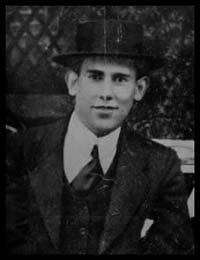By
Evaristo Carriego, a poet for the outskirts

hen his family moved to Buenos Aires, he lived on 84 (today 3784) Honduras Street, in the neighborhood of Palermo. From a very young age he frequented the literary coteries in Buenos Aires where Rubén Darío and Almafuerte were the important names.
 He wrote for different publications of that time, like La Protesta, Papel y Tinta, Caras y Caretas, and others. In them he published his poems and short stories. He published his first book of poems, Misas herejes, in 1908 and his remaining poetical oeuvre was released after his death under the title La canción del barrio.
He wrote for different publications of that time, like La Protesta, Papel y Tinta, Caras y Caretas, and others. In them he published his poems and short stories. He published his first book of poems, Misas herejes, in 1908 and his remaining poetical oeuvre was released after his death under the title La canción del barrio.
Carriego was who discovered the lyrical possibilities of the outskirts and the archetypes that will represent their personal and porteña mythology, in which tough guys, cafés, neighborhood and neighbors stand out, with their sadness and their joy, depicting for us a whole period, a geography, a human feeling. An oeuvre which has proved to be decisive for the later porteñista poetry and for tango lyrics.
 He died due to an appendicular peritonitis, according to the death certificate signed by Dr. Pedro Galli. He was only 29 years old. He was the «poet of the suburb», the «poet of humble people», the «poet of Palermo».
He died due to an appendicular peritonitis, according to the death certificate signed by Dr. Pedro Galli. He was only 29 years old. He was the «poet of the suburb», the «poet of humble people», the «poet of Palermo».
On May 7, 1975 the Asociación Amigos de la Casa de Evaristo Carriego was founded, which was presided by the painter of Palermo, José María Mieravilla, who is mainly responsible for the preservation of that house. The writer Jorge Luis Borges was Honorary President of that institution, to which I had the honor to join.